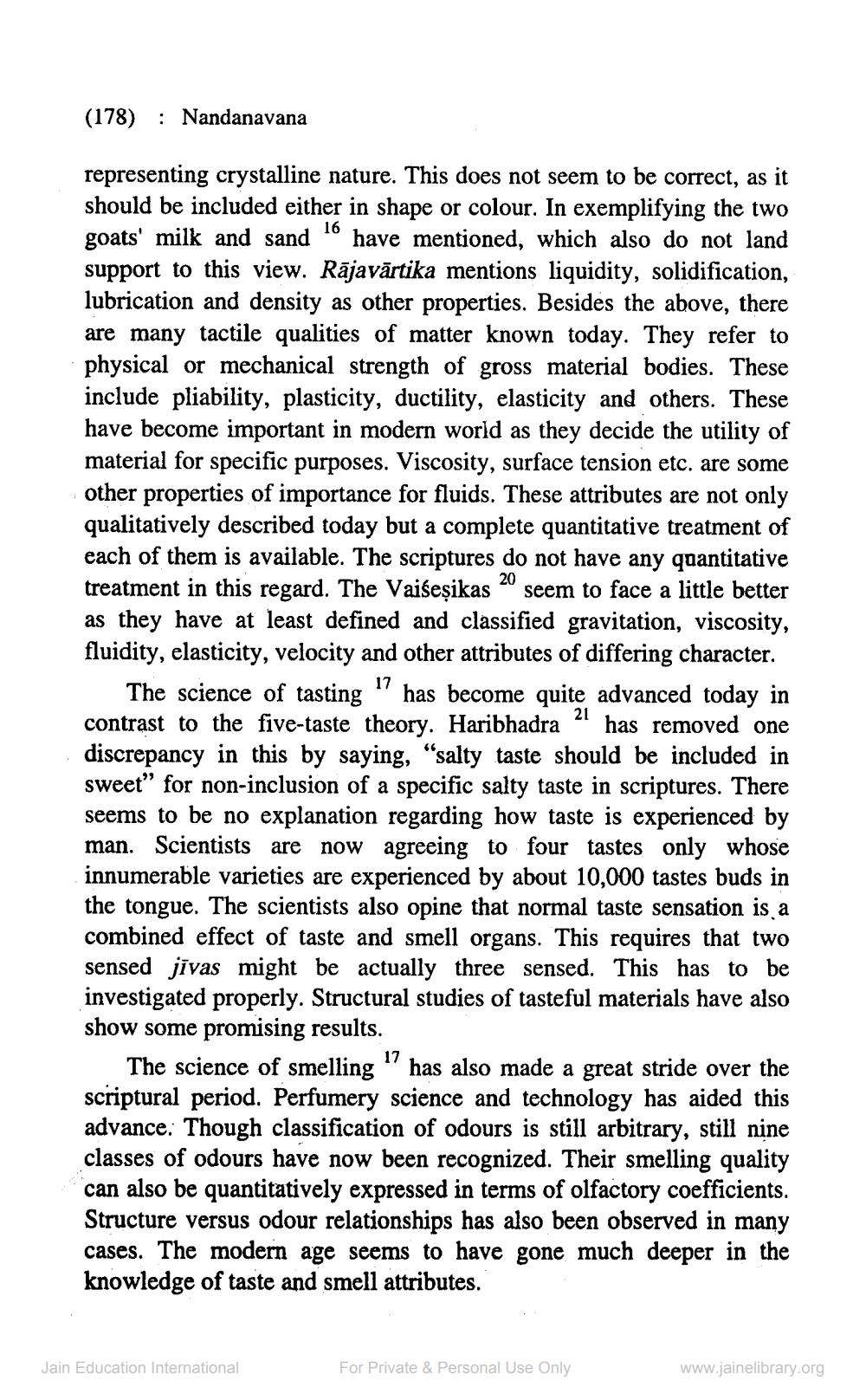________________
(178) Nandanavana
16
representing crystalline nature. This does not seem to be correct, as it should be included either in shape or colour. In exemplifying the two goats' milk and sand have mentioned, which also do not land support to this view. Rājavārtika mentions liquidity, solidification, lubrication and density as other properties. Besides the above, there are many tactile qualities of matter known today. They refer to physical or mechanical strength of gross material bodies. These include pliability, plasticity, ductility, elasticity and others. These have become important in modern world as they decide the utility of material for specific purposes. Viscosity, surface tension etc. are some other properties of importance for fluids. These attributes are not only qualitatively described today but a complete quantitative treatment of each of them is available. The scriptures do not have any quantitative treatment in this regard. The Vaiseṣikas seem to face a little better as they have at least defined and classified gravitation, viscosity, fluidity, elasticity, velocity and other attributes of differing character.
20
17
21
The science of tasting has become quite advanced today in contrast to the five-taste theory. Haribhadra has removed one discrepancy in this by saying, "salty taste should be included in sweet" for non-inclusion of a specific salty taste in scriptures. There seems to be no explanation regarding how taste is experienced by man. Scientists are now agreeing to four tastes only whose innumerable varieties are experienced by about 10,000 tastes buds in the tongue. The scientists also opine that normal taste sensation is a combined effect of taste and smell organs. This requires that two sensed jīvas might be actually three sensed. This has to be investigated properly. Structural studies of tasteful materials have also show some promising results.
17
The science of smelling has also made a great stride over the scriptural period. Perfumery science and technology has aided this advance. Though classification of odours is still arbitrary, still nine classes of odours have now been recognized. Their smelling quality can also be quantitatively expressed in terms of olfactory coefficients. Structure versus odour relationships has also been observed in many cases. The modern age seems to have gone much deeper in the knowledge of taste and smell attributes.
Jain Education International
For Private & Personal Use Only
www.jainelibrary.org




